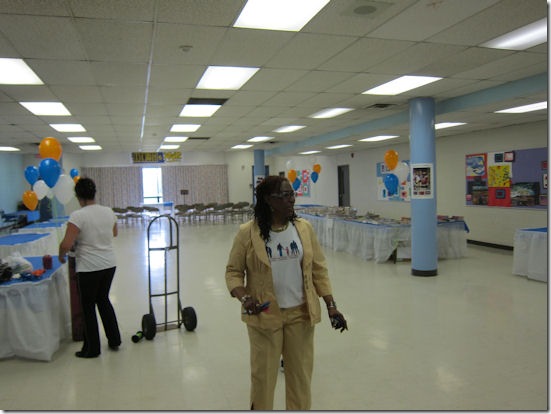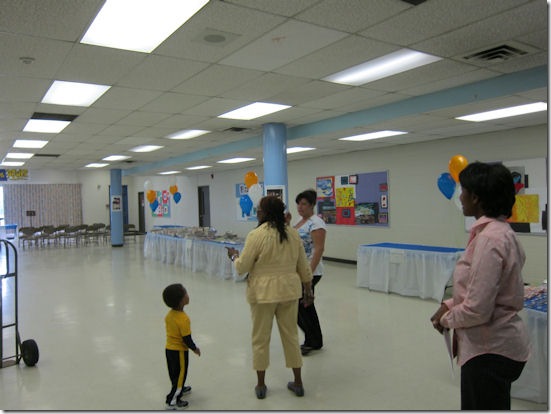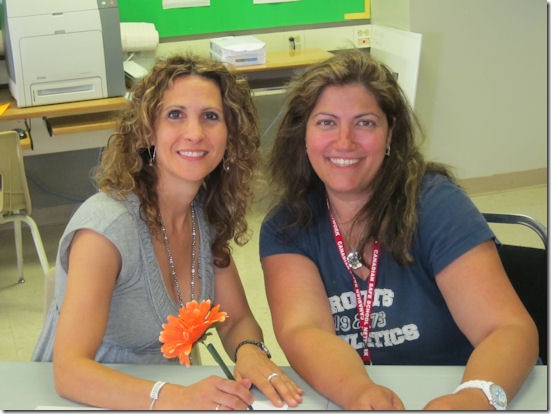Last weekend I volunteered to teach a blogging workshop. The workshop was just one activity at Family Symposium Day put on by the Father’s Across Cultures project headed up by Reverend Sky Starr.
Rev. Sky Starr
A little background:
Every city has what are termed “neglected”, “disenfranchised”, “troubled”, or “problem” neighbourhoods. My city, Toronto, is one of the most prime examples of this. It evolved as a scattering of neighbourhoods, little villages really. As the city grew, most of these communities merged with the others while preserving at their core (often just a simple intersection now) their original personality. We have the Beaches, Cabbagetown, Kensington Market, Rosedale, Forest Hill, Yorkville, Parkdale, several Chinatowns, Little India, Little Italy … mostly residential and market areas – gravitational fields where people once had common ethnic origins. Then there came the commercial and “branded” areas – The Fashion and Financial Districts, the Distillery District, the list goes on. Most of these areas have something to celebrate (or better yet, market!) and their street signs have little raised surfaces proclaiming just what neighbourhood or district they lay claim and fame to.
There are neighbourhoods that do not have such signs. Whether from shame or neglect, it’s as though they are not worthy of an advertised identity. One such area is the Jane-Finch Corridor. Up in the North West quadrant of the city, Jane-Finch is viewed by many citizens as a “trouble” spot. i.e.: home to shootings, drugs, poverty, ugliness, and hopelessness.
I don’t want to single Jane-Finch out, there are other parts of town I could just as easily be talking about – some suburbs, too, for that matter. None of this is new: everyone knows about places where “that’s just the way it is”.
But let me tell you about the uplifting experience I had last Saturday.
I drove up to the Jane-Finch area and realized I knew nothing about it. I’ve only passed it on the highway or accidentally driven through it on my way to somewhere else. I wanted to see as much of the infamous Jane Street as I can, so I started on it as close as I could from my house and went all the way up.
There’s no Starbucks around here, no big fancy chain stores. No newly renovated cute boutiques. Instead, what I see is a lot more interesting. I see literally miles of patched up storefronts with the most fun names I’ve seen in a long time. The signs are improvised, original, creative, colourful – they are in-your-face business announcements. How could there be so many of them?
The people on the sidewalks are doing exactly what people downtown are doing: walking dogs, strolling with children, hanging out talking in front of stores. Any and every kind of international food is here, often several of the same kind in a single block, in the form of restaurant or grocery store.
There isn’t a lot of marketing theory going on here. Every business just comes out and says what it is, jazzing up their names whenever possible. I love it. How refreshing. There is a down to earth vitality happening here and you might as well forget about being status-conscious or worrying about what your shopping bag says on it.
Further north, closer to my destination, spaces widen and there are blocks of older apartment buildings, malls, more lanes to the street. By the time I get right at the intersection of Jane St and Finch Ave, I’m in parts unknown. A couple of blocks away is the school I’m going to be in for the rest of the day.
The place I’m going to is a high school, now called an Alternative school. Why alternative? It’s because it’s a school where kids can go when they don’t or can’t fit in to a regular secondary educational facility, with all-day classes and the regular “streaming” schemes. These are kids who will say that they are at school “all the time” if they attend 2 or 3 days a week.
I’m not a teacher and I don’t know enough to give you the whole story about the kids and this school – only what I experienced for myself on one day.
What we were expecting
What we were expecting to do was have our blogging students each at their own computer and following along with me and two teachers. We had an overhead projector for this and printed hand-outs for instructions. We were also expecting at least 12 students in at least 3 workshops at scheduled times throughout the day.
What really happened was that we got little groups coming in at different times. Well, this was a Family Symposium Day and there was lots to do and see and we were the only ones to have any kind of time schedule to our activity.
The kids, of course, had no idea what to expect.
There was a such a range of familiarity with blogs, the internet, and computers, that there was no one approach we could use. Luckily, the groups were small enough that we were able to do one-on-one sessions with most people. And even within the groups – usually friends – there was a lot of disparity of skills, knowledge, and interest. We had to juggle workstations, hopping around from one student to another, trying to keep track of where we were with each of them. I guess this is nothing new to a teacher. And I was lucky, again, to have two of the most enthusiastic and helpful teachers with me that day:
Sylvana and Anna-Maria (great teachers)
The kids seemed to have only trust and disbelief when their blog was published and they could see it on the computer screen. Trust, because now it looked real – it was “out there” in there in the external world and the external world is “reality”.
Disbelief, because there was such a huge gap between their inner life – thoughts and feelings – and their new published blog post that looked very much like any professional blog. Fonts, pictures, it was all there. Same with the keyboard: if it was typed on the keyboard, it was serious, real. When I suggested they could try writing things in a diary, journal, or notebook, they kind of went blank. This was too personal – people might see their innermost thoughts. I then suggested that they had control over what they wrote in a notebook and control over what they typed on a keyboard. In many cases, that gap was just too big. I took a different approach: how about, I said, there is something you’re really interested in and you think you might find it too embarrassing to make public? Yes, they got that. Well, I know from experience that there are many “niche” blogs with pretty narrow appeal to most people. And those bloggers still get thousands of visitors. The magic of blogging happens when you find out your private special interest is actually shared by so many others. Soon, visitors are commenting on what you wrote. You go to their blogs. The world becomes a little smaller, you feel a little less alone, and wonder of wonders: a conversation begins.
For many even this approach didn’t work, blogging wasn’t for them. Ok. We still had a nice time.
If there was one thing that was common to the whole day, it was the sense of goodwill among everybody. No attitudes.
Many people might say the Jane-Finch kids are disadvantaged. Their lives are a bit tougher than other kids. But I saw one great advantage here. The school brings in all kinds of members of the community: artists, athletes, former gang members, to name a few. The teachers like to bring in anybody to talk and share their experience with the kids. In fact, that seems to be a premise for how the school can succeed. The school does not operate in isolation, there is constant exposure to the outside world. Way more than students would get in a “regular” high school. There’s a bonus to being “disadvantaged”.
People like Rev. Starr, teachers like Anna-Maria and Sylvana, Donna Blanco, and the multitude of volunteers for this event, have brought the community together for a common cause. There’s a lot of healing to do, a lot of inspiring to do, a lot of support to give. The best thing, for me, is that nobody got treated like a lost cause. It seemed like the most natural get-together in the city.
I am grateful for the experience.








If you want to make God laugh, tell him your plans…
I love the part where you had this schedule for large, organized groups and what you got instead was small groups straggling in whenever. I bet you enjoyed the unstructured flitting about much more than the lecture you had planned! Good on ya for extending yourself into a community that most people find all to easy to put out of mind.
Thanks, Tim, for your comment.
By the way, that’s a bet you would win – about the unstructured running around. Luckily, scattered activities work better for me than plans, so it was no chore.
And I wasn’t the only one contributing time and energy to this project. I was somewhat overwhelmed by the generous response of so many volunteers and donators.
Dave
David,
You have hit the nail on the head addressing the organic flow of the Jane-Finch community. There are so many ‘words’ from the ‘outside’ and not enough from the ‘inside’, at ground-level.
It takes a special eye to look that this neighbourhood and the life it holds.
Thank-you for moving this dialogue forward.
db
Hi Dave, I haven’t been around for a while, I liked this post since it puts a finger on a very sore spot in our society. In some ways it’s all about appearances and not about the reality of things that happen. There are many things people would prefer not to see, but sometimes they’re the most worthwhile and authentic.
Writing has a personal, cathartic character which, whilst not for everybody, also helps organise the thoughts, identify problems and sticking points, and offering intuitive solutions which seem to bubble up whilst writing.
Cheers,
Bart
Hi Bart!
Thanks for the comment.
A couple of things have occured to me since writing that post.
One: it’s the keeping of distance between communities that breeds all kinds of false perceptions which seem to take on a reality of their own. As soon as I got into that school and met people, it was like striking up a conversation with anyone at a coffee shop. No big deal – ordinary, in the good sense. While new to the Jane-Finch community, I was made to feel at home.
Two: I am always amazed how the simple act of picking up a pen lifts me up. It starts something that gets me out of myself, gets the crap (and good stuff, too) out and onto a page. Almost instantly, things change for the better.
I agree with your point about writing having a cathartic character. We all seem to carry around so much that we don’t need to. You described it well.
See you on your blog (which is fantastic, always!)
Dave
RE-SUBMISSION_SORRY, USED HYPERLINK FOR NAME CHANGE OF-
Jane and Finch-to… Jane’s Finch…
I do think that ‘Jane and Finch’ name might need a ‘slight tweeking’ of its name-how about JANE’S FINCH?
Just saw a David Suzuki doc on new ecological improvements on the lake in downtown Toronto (as well as Edmonton, Vancouver…) with its urban renewable landscaping, water treatment-just wonderful. Now, all we have to do is move our eyes to the Jane Finch corridor (Yiks! who named it?) and start looking towards innovative ideas for renewing, re-thinking, revisioning this area. I am seeing trees, walkways, circular paths, mixed housing, gardens, buying out the golf course for green space.
Why do we have to wait a generation to move on this? JANE’S FINCH told me so.
“the keeping of distance between communities…breeds all kinds of false perceptions which seem to take on a reality of their own.”
As above, so below.
Communities are a reflection of our inner states. When their is little self-esteem whether one is a have or have not false perceptions run wild.
It is only by insightful inner hardwork that one can move forward. This is not through our heritage, cultures or family life that perceptions are changed. This is an individual
and personal choice. The reward is freedom from the known.